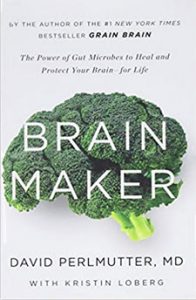

Never in the history of humankind have we had an emergency need to lower blood sugar. The chronic high levels of blood sugar create an epidemic of diabetes and obesity, which lead to other health problems like high blood pressure, high triglycerides, insulin resistance, and insomnia.
I’ve been a proponent of eating low carb for many years. I have an excellent understanding of how elevated blood sugar slows weight loss. Most foods high in carbs will elevate blood sugar levels and keep them elevated. More critical, insulin levels also increase, telling the body to store your food as fat. As we age, we don’t need as much food as we did when we were in our childbearing years or constantly on the go caring for a family. However, food is a social part of our environment and an emotional component of our daily lives. There is more convenience to eating, which is typically highly processed.
I have been watching the History Channel’s series “The Food That Built America” and how ingenuity has created some genuinely modern marvels. When you think about how James Kraft and the Pabst Brothers changed the cheese industry forever with the creation of shelf-stable American Cheese, it is incredible. That process of those times in the early 20th century has evolved to create highly processed food items. The industrial revolution changed our foods forever. I’m not implying that’s a bad thing, but modern times have produced some questionable food items.
Elevated blood sugar is also related to brain health. There’s a process called glycation whereby glucose reacting with proteins results in “sticky proteins.” These proteins covered with this sticky sugar begin to harden. Glycation injures the brain’s neuron cell membranes and creates neuroinflammation. People with diabetes have four times the rate of Alzheimer’s, pre-diabetics three times, and compromised blood sugar two times risk. The inability of Alzheimer’s and dementia patients to utilize glucose is a critical factor in disease and newly coined as Type 3 Diabetes. In Dr. David Perlmutter’s book Brain Maker, Dr. Perlmutter shares studies showing a direct correlation between elevated blood sugar levels and Alzheimer’s and dementia.
Unless you cook your food to know what you’re eating, it’s hard to escape sugar or the hidden names for sugar, typically names ending in -ose. If a product lists sugar or a sugary ingredient as one of the first three ingredients, the product is likely high in sugar. There is some good news from the USDA. In 2015 on average, Americans consumed 120 lbs. of caloric sweeteners compared to 151 lbs. in 1999. Caloric sweetener being refined cane and beet sugars, corn sweeteners, honey, and edible sweeteners.
I know many people try to avoid sugar. If you look in your food pantry or refrigerator and read the labels, I’m sure you’ll find more sugar than you expected to find. You need to be diligent and vigilant and read every label and know the hidden names where sugar lurks.

I LOVE Your article! Since my Type 2 diabetic diagnosis, I have been reading the labels and am astounded by the sneaky sugars in just about everything we eat. I do not just READ the labels, I study them and the wording and references are mostly ALL misleading.
Now, many have known this for a long time but I feel so guilty in the way I fed my children foods that blurted 50% less sugar (or some such nonsense) when we never knew the original percentage or if it was still in there. Who can measure? My tongue cannot tell the difference but my body speaks it and not in so kind of a way.
I could go on about this but I applaud you for pointing this out and as I journey into the land of “added sugars” for this and that, I will keep your article and your words in mind. Many people can be helped by just what you have written. Thank you so much!
Thanks you Zenobia! Good for you for studying the labels and looking for the hidden sugars! I hope you’re type 2 will be a thing of the past with all your reading!